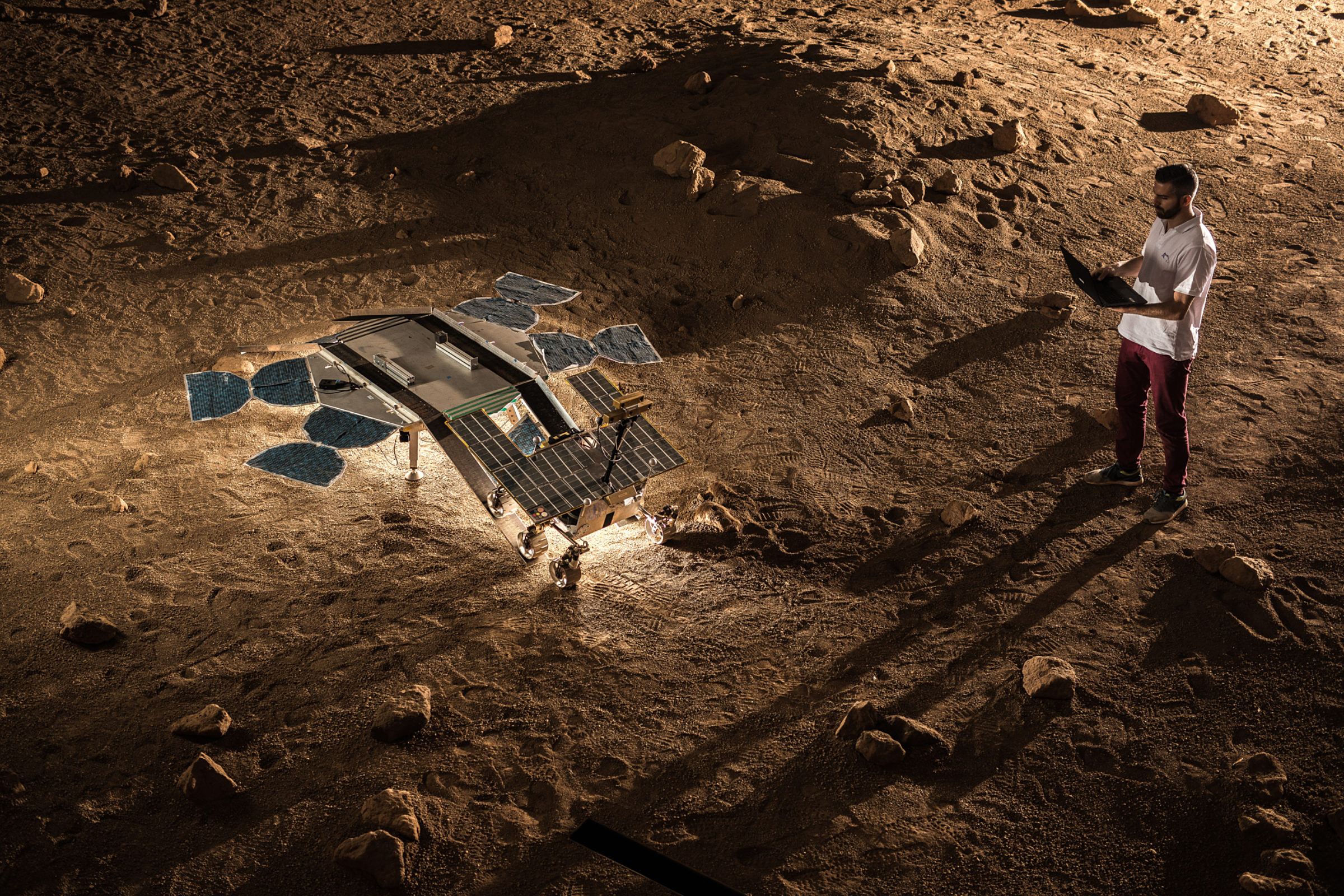Emily Lakdawalla • May 30, 2019
ESA Prepares for ExoMars Rover 2020 Launch at Mars and on Earth
Preparations for the ExoMars rover mission are in their final stages. ESA made two announcements today: ExoMars Trace Gas Orbiter is shifting orbit, and they officially opened a new Rover Operations Control Centre (ROCC) in Turin, Italy. ROCC will support the Rosalind Franklin rover’s deployment from the Kazachok lander and surface operations after that. Along with the announcements they posted some cool images. The mission is proceeding toward a July 2020 launch and March 2021 landing.

ExoMars Trace Gas Orbiter has had a productive science mission so far (finding no methane, which is a puzzle). If the rover lands successfully, the orbiter is going to take on a second job: rover data relay. To prepare for that work, ExoMars TGO will make a subtle change to its orbit on 15 June that will place it on course to be in the right place at the right time to relay the arriving rover’s telemetry to Earth. In the meantime, ExoMars TGO is performing regular tests of rover relay with Curiosity, giving ESA controllers valuable experience, and NASA scientists more data return. NASA provided its Electra relay radio packages to ESA to make all this as seamless as possible.
Meanwhile, the new Rover Operations Control Centre is a huge sandbox (dirtbox?) for engineers to play in. It's much like the In Situ Instrument Laboratory at the Jet Propulsion Laboratory where I’ve seen engineers work with models of Curiosity, the Mars Exploration Rovers, and InSight. I assume that when they're actually using it for testing they don't light it quite so dramatically!

There are multiple models of the rovers of different sizes being tested at ROCC. The model ExoMars rovers, also called breadboard rovers, are named Bridget (the earliest developed), Bruno (the full-scale, full-mass, most-like-flight model, like Curiosity’s MAGGIE), and Bryan (the full-scale, stripped-down, mass-scaled-to-Mars-gravity model, like Curiosity’s Scarecrow). The rover shown in these pictures is reduced-scale (half-scale, I think?) and doesn’t match the photos I can find of Bridget, so may be another model specifically for egress testing.
Here’s a neat comparison of Bruno and Bryan from Airbus (scroll down to the heading “Meet the Rovers Bryan and Bruno”)
In addition to the Mars Yard, ROCC has another really cool test platform: a second sandbox, 8 meters square, that is mounted on a tiltable table. The table can tilt up to 30 degrees, allowing engineers to test rover mobility in a continuous range of conditions. I’ll bet JPL wishes they had one of these. See it at work in this video:
Meanwhile, the actual flight rover is proceeding through its tests. Science instruments are going through thermal vacuum testing, making sure they’re ready to endure the rigors of launch, cruise, landing, and life on Mars.
Support our core enterprises
Your support powers our mission to explore worlds, find life, and defend Earth. You make all the difference when you make a gift. Give today!
Donate

 Explore Worlds
Explore Worlds Find Life
Find Life Defend Earth
Defend Earth

